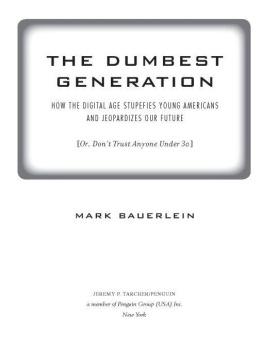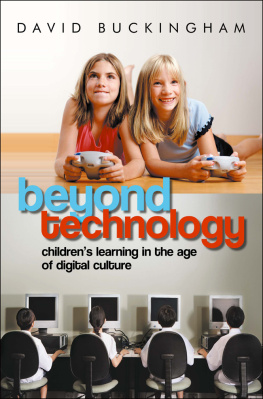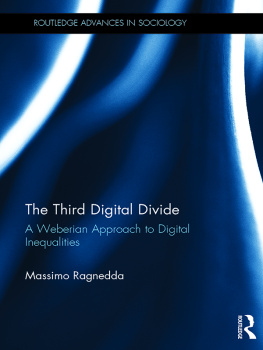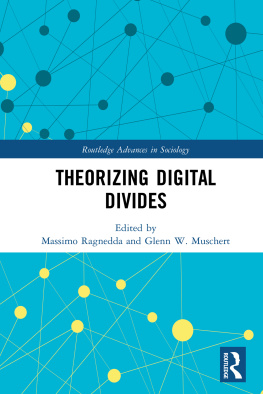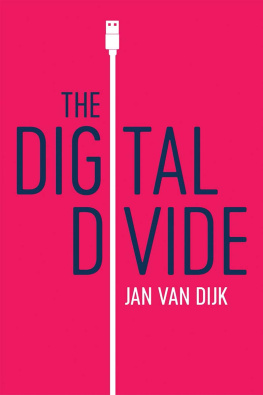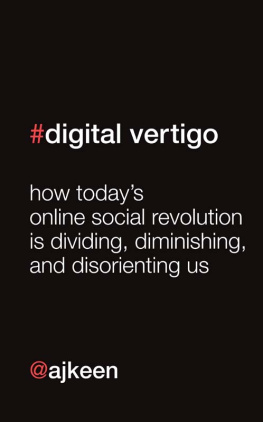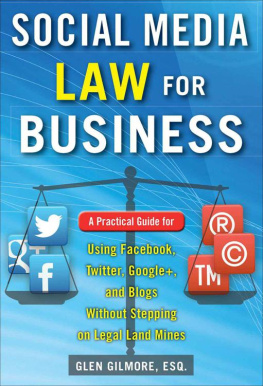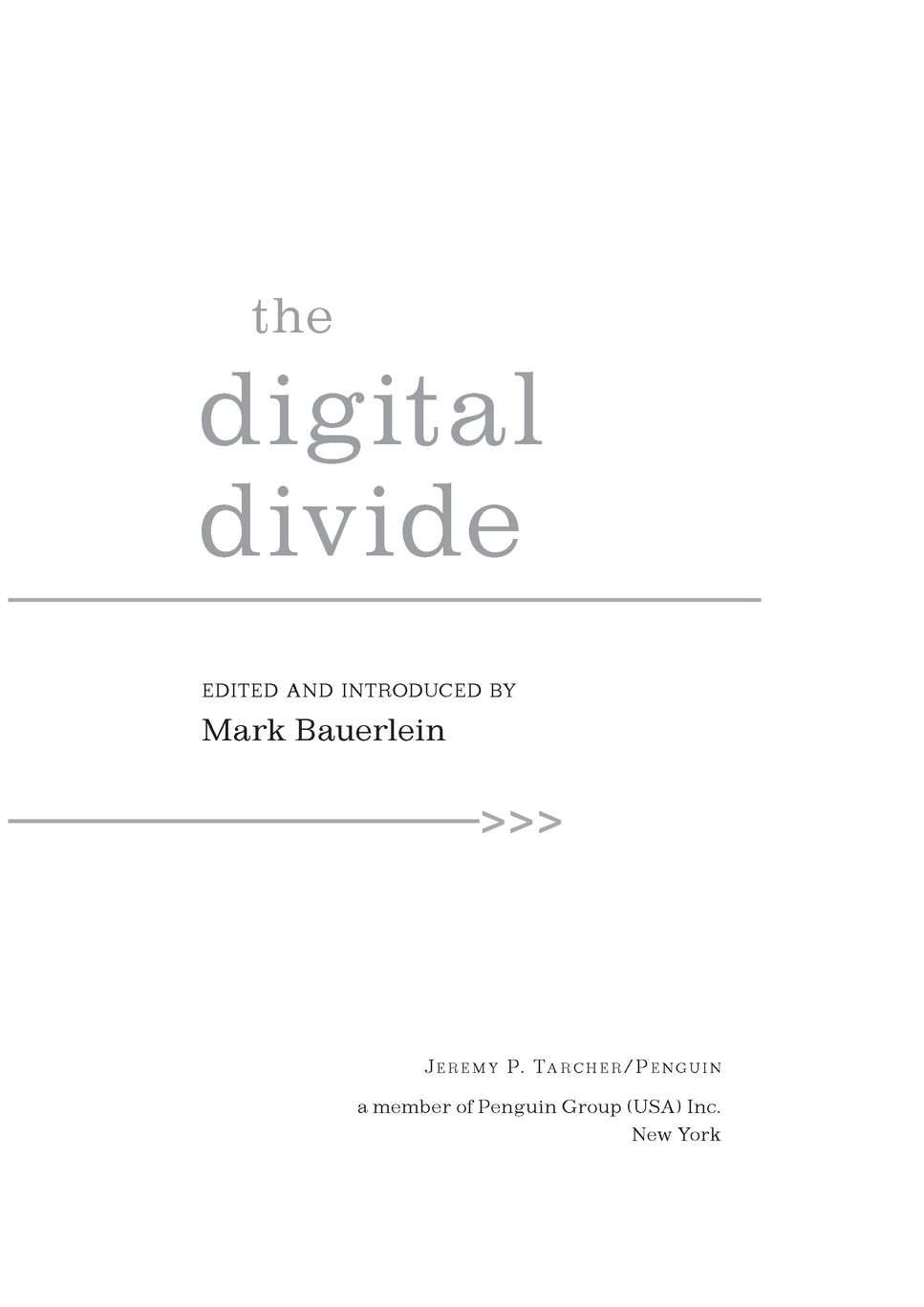Table of Contents
Arguments for and
Against Facebook, Google,
Texting, and the
Age of Social Networking
< Mark Bauerlein >
introduction
MARK BAUERLEIN is a professor of English at Emory University. His books include Literary Criticism: An Autopsy (1997) and Negrophobia: A Race Riot in Atlanta, 1906 (2001). His essays have appeared in PMLA, Partisan Review, Wilson Quarterly , and Yale Review, and his commentaries and reviews have appeared in The Wall Street Journal, The Washington Post, The Weekly Standard, Reason magazine, and elsewhere. More information can be found at www.dumbestgeneration.com.
IN EARLY 2011, The Wall Street Journal published an excerpt from a book called Battle Hymn of the Tiger Mother, a treatise on the superiority of Chinese mothers over Western mothers, written by Yale law professor Amy Chua. The book excerpt was clearly intended to court controversy, but the exact way that that controversy played out illustrated well the new ways we communicate.
Within hours, it seemed, the article had exploded in op-eds, blogs, and follow-up stories from The New Yorker to NPR to Newsweek to angryasianman.com, with reactions ranging from enraged to regretful to cheering. The authors eldest daughter defended her mother in an effusive testimonial in the New York Post. I just Googled Amy Chua and 544,000 results came up. Most amazing of all, perhaps, was the response of readersnot the content, but the quantity. At the present moment, fully 6,901 comments have piled up on the website beneath the excerpt. And of course, as all this unfolded, the hardcover edition of Tiger Mother climbed to #4 on Amazon. The book had only been available for a week.
For all the hoopla, however, we may be certain that in a few more days, attention will shift elsewhere to other affairs. Thats the pace of news in the digital era. The ups and downs of current events run steeper and faster, as if a roller coaster were squeezed into a smaller space. Ballyhooed controversies happened before the Web came along, but they didnt arise, expand, and deflate so quickly and voluminously, and with so many participants in the process. In the days of print-only, the excerpt would have taken days or weeks to circulate to other journalists, and reader responses would have amounted to several dozen letters to the editor, three of them selected for publication in a later edition. By comparison, todays communication travels at light speed, and any edgy, comic, or otherwise quirky story or video can go viral. Everybody can weigh in and say almost anything they want.
What does it mean? How are we to understand the changeor, perhaps more important, what is it that we are supposed to understand? What stands out in this case is that sublime number on the comments ledger: 6,901. It signifies the provocative nature of the excerpt and a watchful, interactive audience. The process sounds unequivocally positive, especially given the conditions the The Wall Street Journal sets for comments. Community Rules disallow anonymity, and You must demonstrate appropriate respect (no vulgarity). Violators are banned. As a result, comments there are thoughtful and critical.
Still, one has to wonder about the purpose of so many people writing so many things about a 2,500-word newspaper piece. Its a new phenomenon, unique to the Digital Age, and it calls for examination. Some of the contributors to this volume would maintain that this is democracy in action, meritoriously so. That ordinary people have the chance to speak back and have their opinions published at one of the nations leading newspapers can only enhance civic life. Others, however, question what Journal readers think when they encounter 4,383 comments to a news story and believe that post #4,384 really matters. Is this democratic participation or fruitless vanity?
The writings in this anthology address that and many other questions. They present a range of judgments about the Digital Age and digital tools and behaviors that have enveloped our waking hours. Indeed, whenever people consider the marvelous and unprecedented ways that the Digital Age has transformed our lives, they should keep that curious fact in mind. However sweeping and abrupt the changes are, most individuals have absorbed them with dispatch. The flood of digital tools was and is mighty and abrupt, but adults and youths generally behave as if it has always been thus. Calmly and expertly, they wield devices and form habits that were inconceivable only ten or twenty years ago.
And it has happened so quickly. Cell phones, e-mail, the Web, YouTube, and the rest have speeded up communications, shopping, photographing, and studying, and they have also quickened the conversion of each new and desirable invention into a regular part of life. At a clip that would stun a pre-1980 person, novelties promptly become customs. One or another of them may mark a fabulous breakthrough, but they dont stand out for long as striking advances in the march of technology. Soon enough they settle into one more utility, one more tool or practice in the mundane course of job and leisure. How many decades passed between the invention of the telephone and its daily use by 90 percent of the population? Today, the path from private creation to pandemic consumption is measured in months.
Consider the Facebook phenomenon. The network dates back to 2004, but seems to have been around forever. In six years it has ballooned from a clubby undergraduate service at Harvard into a worldwide enterprise with more than 500 million users. It already has acquired a biography, chronicled in the hit film The Social Network and books The Facebook Effect: The Inside Story of the Company That Is Connecting the World and The Accidental Billionaires: The Founding of FacebookA Tale of Sex, Money, Genius, and Betrayal. Co-founder Marc Zuckerberg garnered Time magazines 2010 Person of the Year award. A 2010 Harris Interactive poll of eighteen- to twenty-four-year-olds ranked Facebook #2 for brand familiarity and quality (Google came in first). In the month of April 2003, Americans spent zero minutes on Facebook. In April 2009, they logged 13,872,640,000 minutes.
Or think about the rise of texting among the young. In September 2008, Nielsen reported that thirteen- to seventeen-year-olds with a mobile device averaged 1,742 text messages per month. A few months later, Nielsen raised the total to 2,272 texts per month, and by mid-2009 teens passed the 2,500 marker. In October 2010, Nielsen set the monthly amount at 3,339. At that pace, consumer behavior signals a lot more than convenience or trendiness.
Note, too, yet another sign of mass adoption: the astounding dominance of Wikipedia, the online encyclopedia. It opened shop only ten years ago, but now contains some seventeen million entries (according to the Wikipedia entry on Wikipedia). In 2008, educator Michael Petrilli tested Wikipedias popularity by choosing one hundred terms from U.S. and world history (The Mayflower Compact, Anwar Sadat, etc.) and typing them into Google. A Wikipedia entry came up first for eighty-seven (!) of them, second for twelve of them, and third once. Since the top spot in any Google search attracts 42 percent of all click-throughs (as AOL reported in a data release a few years back), Wikipedias first-choice status is clear. What didnt exist in 2000 is now the towering source in civic and historical matters.


